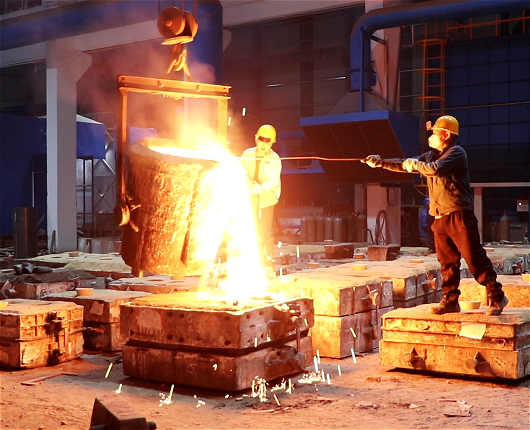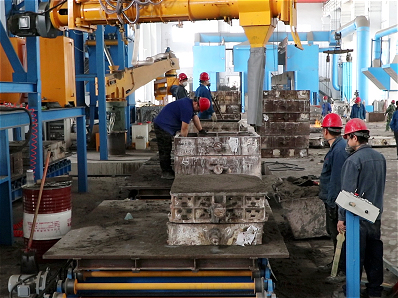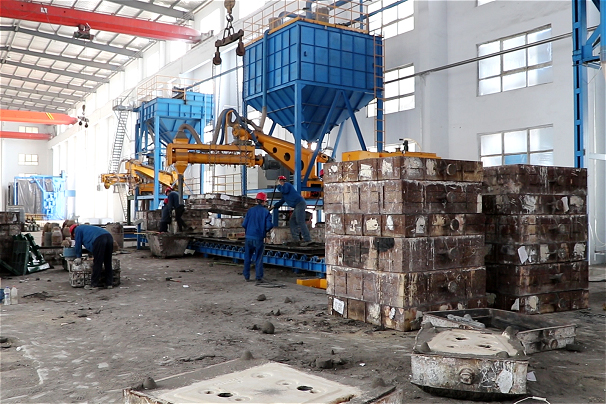
Resin sand is a chemical substance that can clean paint and coating layers. The casting of many castings is inseparable from resin sand. In the foundry industry, "resin sand casting" is an excellent and reliable casting method. During the casting process, the properties of resin sand are used to isolate and block the casting and the casting mold, thereby shaping the casting.



The sand supply system is an important part of the resin sand casting line and is responsible for transporting raw sand to the sand mixing equipment. The sand supply system usually consists of sand storage bin, quantitative conveying device and conveying pipeline. The sand storage bin is used to store raw sand. The quantitative conveying device quantitatively transports the raw sand to the sand mixing equipment according to production needs. The conveying pipeline is responsible for transporting the raw sand to the vicinity of the sand mixing equipment.
The sand mixing equipment is the core part of the resin sand casting line, responsible for mixing resin and raw sand into resin sand. Sand mixing equipment usually consists of a mixer, sand mixing box and control system. The function of the mixer is to fully mix the resin and raw sand evenly. The sand mixing box is used to store the mixed resin sand. The control system is responsible for controlling the operation of the sand mixing equipment and adjusting the ratio of the resin sand.
Resin sand reclamation equipment is used to reconditioning the used resin sand. Through sand reconditioning, the resin sand can regain its performance and be reused, thereby reducing production costs and waste emissions. The equipment usually consists of heating device, crushing device and dust removal device.
Dust removal equipment is used to remove dust and waste gas generated during the production of resin sand. Dust removal equipment usually consists of filters, vacuum cleaners and discharge devices.
The resin sand process can minimize environmental pollution caused by waste sand removal. At the same time, due to the high stiffness of the resin sand, there is basically no wall displacement during the pouring and solidification processes, so the dimensional accuracy of the castings is very high.
Customized design according to the actual needs of customers.
The resin sand casting line is not limited by the shape, complexity and alloy type of the castings. It has a short production cycle and is widely used. It is suitable for mass production of castings.
The castings have high dimensional accuracy and clear external contours. The surface of the casting is smooth and the appearance quality is good. The structure is dense and the overall quality of the casting is high.




Sand preparation stage:
Mix raw sand and resin together according to a certain proportion, usually in a sand mixer.Mold making stage:
Make molds and core boxes according to part drawings. Plastic molds or metal molds can be made for mass production, and templates can be made for large batch castings.Molding stage:
Use molding sand to form the cavity of the casting to form the internal shape of the casting. Place the matching mold into the cavity and close the top and bottom sandboxes.Smelting stage:
Prepare the chemical composition according to the required metal composition, select a suitable melting furnace to melt the alloy material and form a qualified liquid metal.Pouring stage:
Use a ladle to pour the molten iron melted in the electric furnace into the sand mold.Cleaning stage:
After pouring, wait for the molten metal to solidify, use a hammer to remove the gate and shake off the sand on the casting, and then use a shot blasting machine or sandblasting machine to sandblast so that the casting surface will appear very clean.Inspection stage:
Casting inspection is generally carried out during cleaning or processing, and for special castings, non-destructive testing is required.

| Type |
Productivity |
Dia |
Rotate speed |
Motor power |
Turning radius |
| S245 | 5 | φ175 | 960 | 3 | R2000 |
| S248 | 8 | φ200 | 960 | 5.5 | R2000 |
| S2412 | 12 | φ225 | 720 | 7.5 | R2000 |
| S2415 | 15 | φ230 | 720 | 11 | R2000 |
| S2420 | 200 | φ250 | 720 | 15 | R2000 |
*The output will vary according to different materials, feed particle size and other factors
Save Time! Get A Detailed Quotation Quickly.
